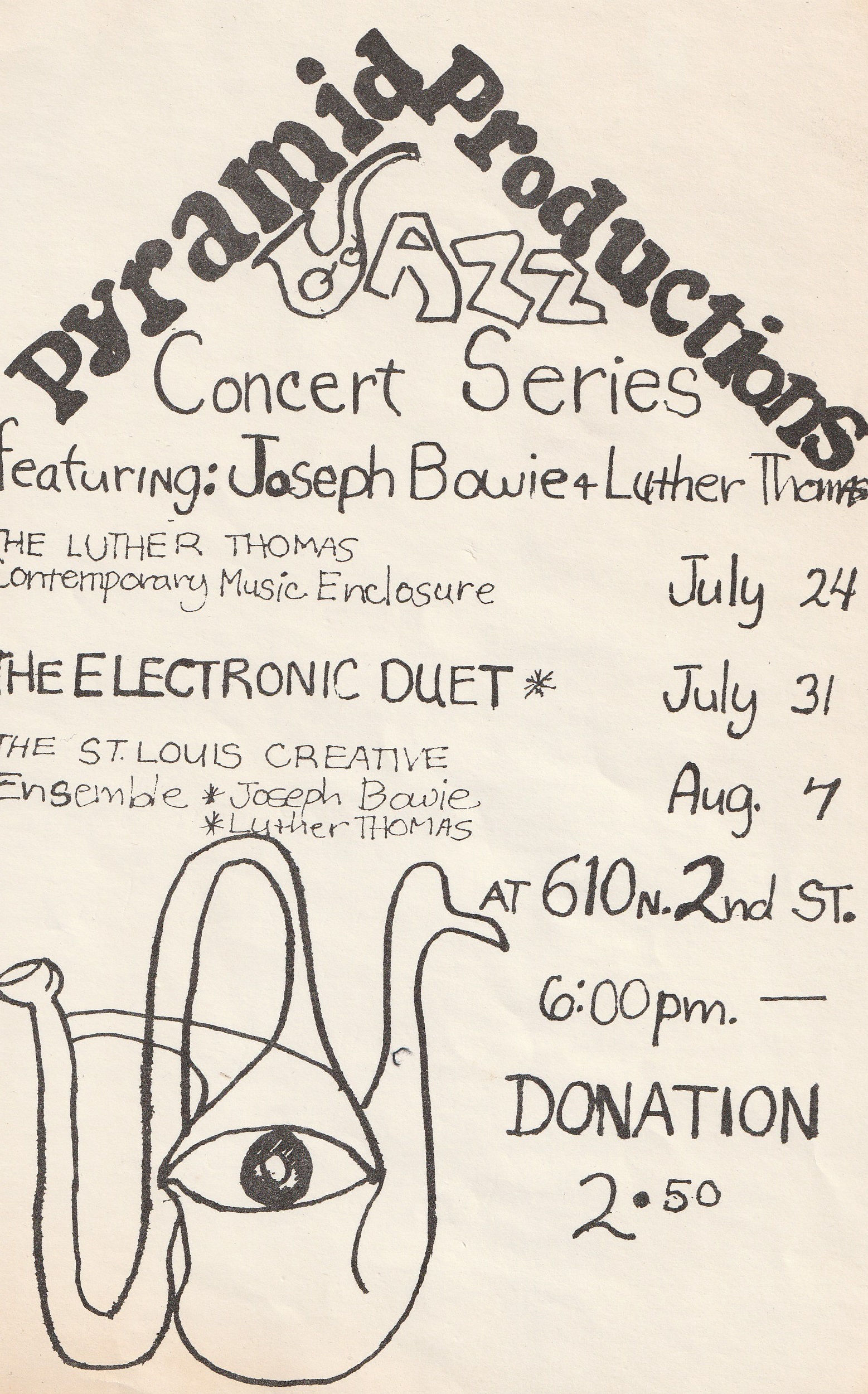
The history of avant jazz goes on for many volumes of books (I have a few recommendations on the "Resources" tab), so I’ll pick out a few experiences that have made a lasting impression on me that might give some insight to those interested in learning more about this genre. Jim Goetsch / Music Director

One event that has always been an inspiration to me is the “October Revolution in Jazz” from 1964. After Ornette Coleman turned the NYC jazz world on its head with his extended run at the Five Spot in 1959, an avant garde scene there really began to flourish… but they were having real trouble finding any jazz clubs to play. When Bill Dixon found a cellar coffee house that was willing, he assembled a festival of avant garde jazz to take place there… and to everyone’s amazement, it drew big crowds and left a permanent mark on the jazz world. Wikipedia has a good account of it and is a great place to start for those interested in learning more.

One of the things that grew out of the October Revolution was the Jazz Composer’s Orchestra, and the 1968 release by that organization was a real landmark in avant garde jazz history. It consisted of compositions utilizing graphic scores by Michael Mantler rather than standard musical notation, and each piece was constructed around featured performers that included Cecil Taylor, Don Cherry, Roswell Rudd, Pharoah Sanders, Larry Coryell and Gato Barbieri. This record has certainly made a big impression on me and will be a point of reference for me with Avant Jazz Workshop. One interesting note for me is that some of the pieces include five bass players….. and we in the collective think we have a lot at the times when we have three!

I was fortunate to get started in music in St Louis during a time when avant garde jazz was a big thing due to the efforts of another collective, the Black Artists Group, which is the subject of a great book by Benjamin Looker titled “Point From Which Creation Begins”. One day I got a call from my good friend Jim Miller, a drummer quite well regarded in that scene, telling me that Joe Bowie had put the word out for players to show up to do a large improvised ensemble but they should get there half an hour before the show to receive the directions. The directions consisted of a lot of hand gestures regarding when to come in or drop out, what type of background part that should be played by supporting players, and so forth. This was quite bit different from the free jazz that was common there, where no direction at all was given…. but this approach was quite successful and yielded a great performance. So more lessons for the Avant Jazz Workshop here…

Another great experience for me in the avant jazz world in St Louis was participation in a concert by composer George Russell. The first half of the concert was a couple of pieces from his early career arranged for big band, but the second half was an hour long piece titled “Electronic Sonata for Souls Loved By Nature”. It was written for big band and a four channel electronic recording the he created that was played back on speakers in each corner of the concert hall. But the notation was also unusual, consisting of what George called “cycles” that were cued by clock time rather than a fixed musical notation. These cycles could be anything from an extended section of standard musical notation to loops of musical notes to conceptual ideas, like trumpets rapidly dropping pitch in what he called “elevator drops”. It was a marvelous lesson in what could be done once the limits were taken off on how music could be created… again more lessons for the AJW to utilize.